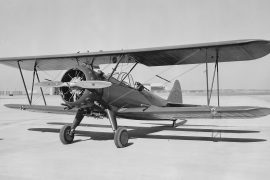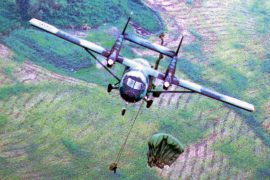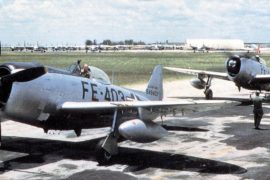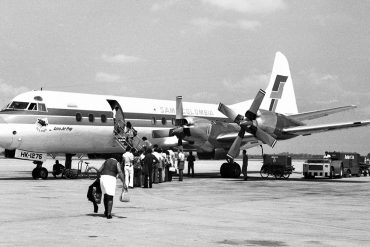The following is the transcription of an interview with Col. Raúl Banderas, Commander of the Escuadrón de Combate 2112 (2112 Combat Squadron) of the Ecuadorian Air Force during the Conflict of the Cenepa in 1995. The author interviewed Colonel Banderas in 2006, while he was the Ecuadorian Military Attaché to France.
Colonel, where were you born?
I was born in Bahía de Caraquez, in the Manabi Province; my mother was born there too, but most of my childhood I spent at Riobamba and Bucay, which is a beautiful town in the Guayas Province and where, anecdotally, is where I have received the most recognitions. They even have been so generous as to name one of the main streets of that town after me.
Where did you attend school?
Elementary studies were in Bucay, at the Ferroviaria school; high school in Riobamba, at the J.F. Kennedy Institute. Then, I attended the Escuela Superior Militar de Aviación (the Graduate Military Aviation School); later I attended the Academia de Guerra Aérea (Air War Academy) and also the Escuela de Defensa Nacional de la Argentina (Argentina’s National Defense School.)
What motivated you to join the Ecuadorean Air Force?
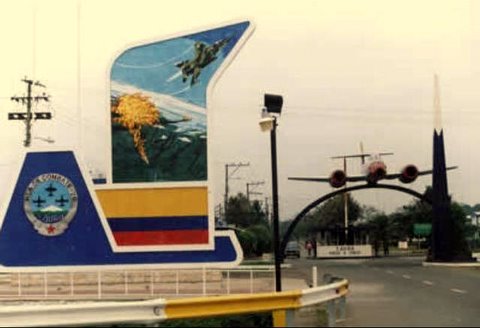
I had an inclination for aviation since I was a little boy. I don’t know if hearing my father talk about it, since he had two cousins who where in the military and two of his brothers were pilots with the Ecuadorean Air Force (FAE for short in Spanish.) Another motivation, I think, was to have seen a combat airplane when I was a seven or eight year old boy, when I was playing with my friends in Bucay; it flew very close above our heads, and in the peaceful atmosphere of that little town that was such an event, with the loud noise it made.
Besides these two instances, I believe that I commented once to the officers and mechanics of the Escuadron 2112, in occasion of my last flight on the Dassault F-1, in January 2005, and this had a lot of influence on me: Whenever we traveled with my father between Bucay and Guayaquil, we went by the Base de Taura. I was an 8 year old kid, but I distinctly remember that every time we were passing by, I stood on the car’s seat so that I could see the Gloster Meteor serving as a gate guardian there. For me, that instant was the most thrilling event of the whole trip.
What are your memories of your experiences at the ESMA and Ala de Combate 23 (23 Combat Wing)?
My passing through ESMA is a collection of conflicting feelings, it was a time of hard struggle. Your physical and academic efforts are demanded to the maximum. There are times when you would like to “throw the towel” but the avocation, the desire to triumph, not wanting to let down my parents, my friends and even myself, kept me going. But, not everything was hard and difficult. There are also moments of great emotion, such as when you are issued your first flight-suit, and more so when you begin to wear it as a “Cadete Alumno” (Student-Cadet) flying your first hours with the instructor; what I will never forget is the day of my “First Solo” because then you feel and prove to yourself that you are capable of keeping that machine in the air, and you can maneuver it and bring it back down to earth without a mishap… That is a wonderful feeling!
Another point worth mentioning from those times, is the true friendship that is forged with your classmates and that lasts until today, when over 30 years have gone by.
How was the transition from a turboprop airplane, such as the Beechcraft T-34, to a sub-sonic jet?
In my case, and in that of my class (31), we completed an excellent training at ESMA, we conducted all the course on the Cessna 150 (130 hours) and we also inaugurated the Beechcraft T-34Cs, also completing all the course training in that wonderful airplane (140 hours), which means that we were very well trained. From there, I transitioned to the BAC Strikemaster; of course you had to study and devote yourself to it, the same as with any other type of airplane but yes, it was a new experience to fly a jet. Later, I would also fly the Cessna A-37B.
How was the transition from a subsonic airplane, to the supersonic F-1 Mirage?
Before moving to the F-1 Mirage, I had the luck of going to the United States to fly the Northrop T-38 during a course that we took in New Mexico, called “Lead In Flight”. We had to study a lot, and with the additional problem of the English language (despite having passed the tests on that language), it was very difficult; and besides being in the cockpit of a supersonic airplane from where I could not see the wings, something that in other airplanes I had flown, served me as a main reference point to conduct any maneuver, but in any case, with dedication, sacrifice and with God’s help, I graduated and was designated to fly the FAE’s most beautiful and noble airplane, the F-1 Mirage; this is a marvelous airplane that was built -I would say- for pilots such as myself, who are not very capable. It lets you fly it and you can do with it anything you can imagine; additionally, it has a good radar, a good weapons system and this makes it a very interesting airplane. Take offs and landings similarly, are easier because the F-1 provides good helping systems for the pilot, thus reducing the workload in the cockpit.
Could you tell us about some experience lived within Ala de Combate 21 (21 Combat Wing)?
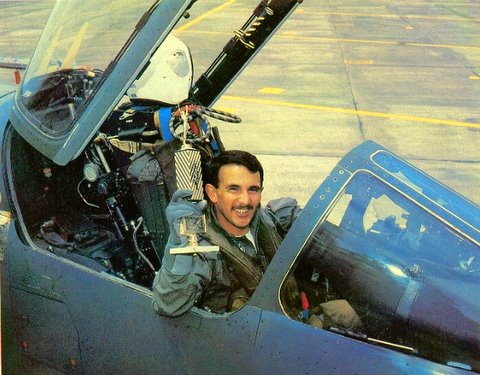
Well, I spent so many great years in that beautiful and beloved base, so there are so many anecdotes and memories.
I was very young when I arrived to the Base in Taura; this was in 1983. I was the less senior in the Squadron, and I began passing the different courses and little by little, gaining experience to eventually, being appointed as the Squadron Commander in 1994.
Then, in 1996 I attended the Academia de Guerra Aérea (Air War Academy) for the Staff course, and returned in 1999 as the Commander of the Combat Group. Then, in 2003, I was appointed as the Commander of Ala de Combate 21. In all of these positions, I was able to continue flying the Mirage, until I had to turn in my command in January 2005.
So, I tell you all this so that you can imagine how many stories, emergencies and quasi-accidents, I had to face during all that time, in order to emphasize something that I remember with deep sadness, and this is the loss of friends and mates. With all the respect that they and their families deserve, I would like to tell you that what we did the Cenepa Conflict, was done as a tribute, a homage, to their sacrifice and their service.
In order to establish the context for the rest of the interview, it’s worth noting that during the month of January 1995, the Ecuadorian armed forces entered into maximum alert due to the recurring attacks conducted by the Peruvian Army, with support from its military aviation. Since its origins as an independent nation, Ecuador has had a territorial dispute with its Southern neighbor.
Following the orders to execute the defense plans, the squadrons from Ala de Combate 21 (Sepecat Jaguar, IAI Kfir C2 and F-1 Mirage) conducted electronic missions day and night, as well as fake missions, aimed at deceiving the enemy. Additionally, there were “dissimilar” sorties flown with the Kfirs and Mirages.
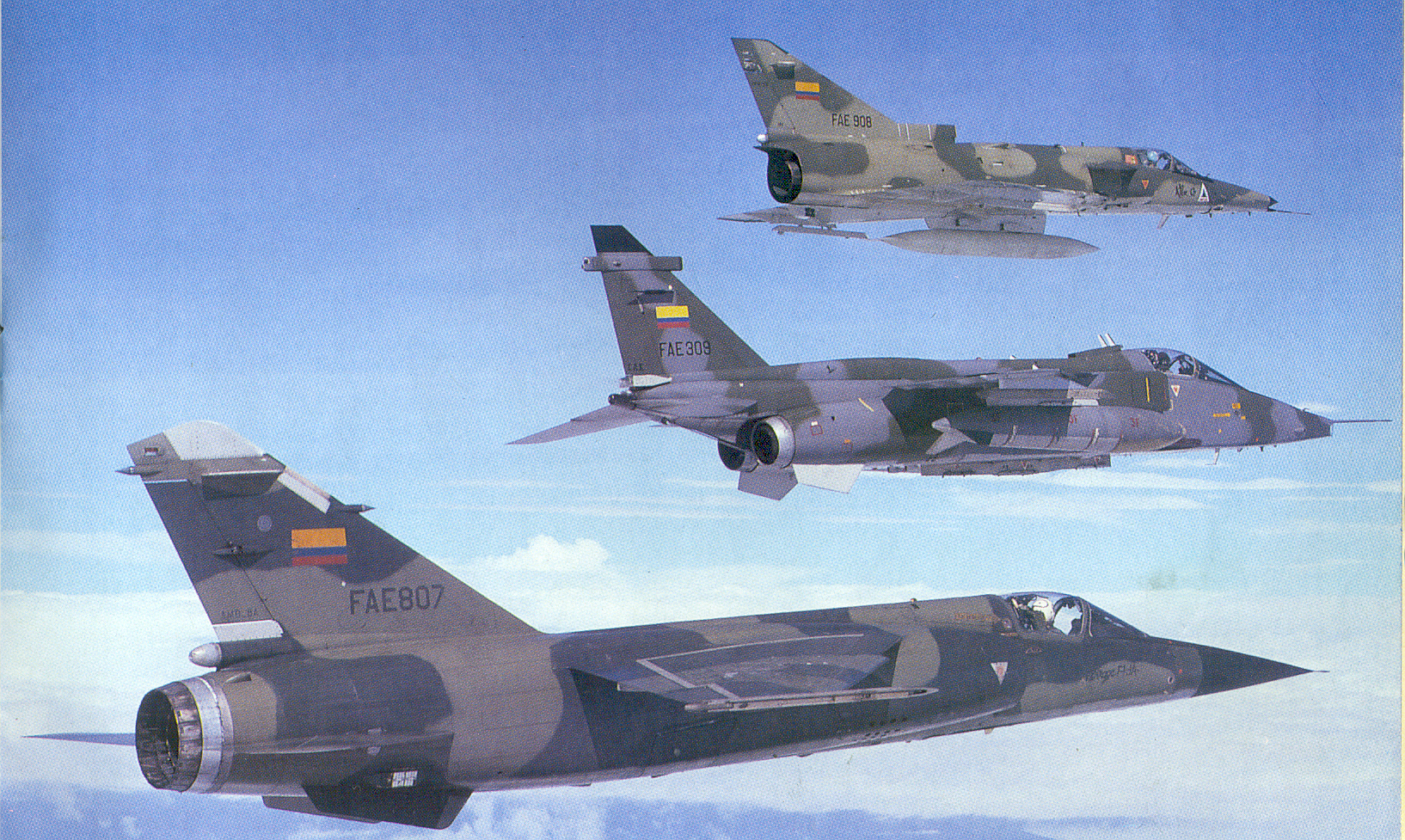
During one of these missions, on February 6, the “Escuadrilla Conejo” (Rabbit flight) composed by Maj. Raúl Banderas on an F-1 and Capt. Eduardo Cárdenas on a C2, had an encounter with Peruvian Mirage 2000 aircraft during a night mission. The Ecuadorean pilots had their training and courage tested to the max, when upon being intercepted by the radar of the enemy’s aircraft, were capable of successfully disengage from such a threat by flying evasive and demanding maneuvers, applying experiences obtained during intensive training conducted while in peace time, achieving as a result a complete loss of contact which allowed them a safe return to Taura. But this would not be the only encounter between Ecuadorean and Peruvian combat aircraft during the Cenepa Conflict.
On February 9, after confirming that Peruvian Mirage 2000s were active in the area, the FAE sent its aircraft after them. Once in the air, Maj. Raul Banderas, leader of the F-1 flight, together with Maj. Cesar Ramos flying a C2, detected the Peruvian Air Force’s Mirage 2000 aircraft. Both groups of aircraft crossed frontally, without seeing each other. The Ecuadoreans then tried to locate the enemy jets but failed and ended up returning to their base empty-handed. Colonel Banderas offers his experiences on those events:
Which functions were you fulfilling within the Ecuadorian Air Force when hostilities broke out?
At that time, I had the rank of Major and I was the Commander of the Escuadrón de Combate 2112. The existing plans for these contingencies, were put into effect; these are planned and practiced during peace time.
What missions were assigned to the Lockheed AT-33 aircraft of the Escuadrón Tiburones (Shark Squadron)?
The AT-33s conducted armed reconnaissance missions and also were capable of providing some close-air support, if needed be.
Were some of the squadrons based at Taura (Sepecat Jaguar, IAI Kfir C2 and F-1 Mirage) ever assigned to conduct ground support missions?
Everything according to the plans, and these type of missions were flown, indeed.
Which of the Ala de Combate 21 aircraft conducted reconnaissance missions?
Jaguar, Kfir, Mirage.
Could you talk about the night mission that took place on February 6, 1995?
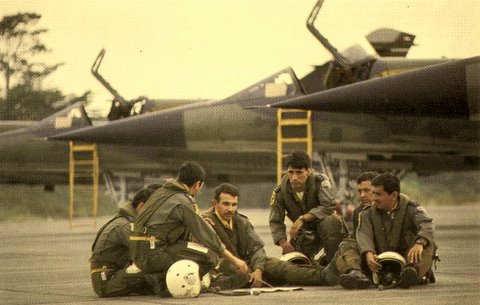
My first mission took place early in the morning on February 6; I was the leader of an escuadrilla conformed by Kfir and Mirage. It was 3:30 in the morning, approximately. Meteorological conditions were really poor, there were electrical storms developing, lots of cumulus and rain. After indications from the Air Defense Radar and being already near the conflict area, I had two echoes on my radar; I locked on them and kept them thus until they were at around 10 nautical miles away. I notified my number 2, who was flying 2000 ft below me. The targets were coming head on towards us.
I began a 180 degree interception, but I released the radar lock, because it was possible that the Peruvian Mirage 2000s could be armed with missiles more advanced than ours, with greater range, and they would then have the advantage of firing first. For these reasons I broke the lock, but as soon as I did, they locked onto us, this time first from the 12 position, and then after the maneuvers that we conducted, from the 9 and posteriorly from the 6 o’clock position.
What we did was very risky, and there were moments where I thought that we would be shot down. I could feel the threat on my Radar Warning Receiver, and I was forced to eject chaff. I broke lock for a little time, just to be locked on again by the enemy aircraft’s radar. The same was happening to my number 2. While this was happening during the flight, under the worst possible meteorological conditions and in complete darkness, we began a steep inverted 60 degree dive, something like an “Split S” towards the ground. I should indicate that initially we were at 32000 ft and with this defensive maneuver, we descended all the way to 8000 ft, even knowing that there were some mountains in the sector. With this maneuver, not advisable for a night flight and bad meteorological conditions such as they were that night, but in face of the threat, it was the best that we could do, and thanks to it, now I can tell about it.
Following this mission, which was my first combat experience, I lost respect for the enemy and for death. Later, I read a book about the Malvinas War, titled ‘Dios y los Halcones’ (God and the Falcons.) There is an experience from Teniente Rinke, where he states exactly the same that I felt that night, and he says something like this: ‘At first I felt uncertainty and I was afraid to cross the fence, but as I was completing my missions, little by little I was losing respect for death.’
After having successfully evaded the enemy aircraft threat, we again climbed and we had to return to our base, because my number two was ‘Bingo’ (the minimal fuel to return safely.)
When we arrived over the base, it was approximately 4:30 in the morning and it was raining very hard. Visibility was less than 2 kilometers, which meant that we could not land there! But the conditions were similar in all nearby airfields and we did not have the fuel to go anywhere else. I had my number 2 to land first, since he was lower in fuel, but when he was on final, couldn’t see the runway and had to go around. I was really worried because he had no more than another 5 minutes of flying time left.
I managed to land but to do this, I had to fly below the minimums, and at the last moment I saw the runway, very close. I landed and I stayed at the end of it, and managed to see my number 2 through the clouds, approaching. On the radio I was telling him: ‘lower, a little more, and you’ll see the runway’ and so it was. He saw the runway and managed to land. When we met back at the apron, we hugged. We had been very close to staying forever in the Cenepa Valley.
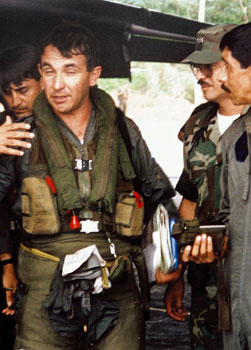
What follows is the report written by Col. Banderas (then, a Major), regarding the mission flown on February 10, 1995:
“Following the flight orders of February 10, 1995, beginning at 1230 hours the ‘Escuadrilla Conejos’ (Rabbit Flight) was scrambled with the following crew: Maj. Raul Banderas (Leader) and Capt. Carlos Uscategui (No. 2.)
We received the orders at 1247 hours and immediately started engines, heading for the runway, and by 1249 hours we were already in the air. We accelerated to 450 kts and after one minute of flight, we switched frequencies to the one assigned by Air Defense; turned onto a 140 degree heading and began ascending to 30000 ft. Air Defense notified us of the presence of targets at 170 miles from our position, on a heading of 175 degrees.
Approximately 4 minutes before getting there, we received orders to descend to 20000 ft and intercept and shoot down any enemy aircraft. We began the interception on the 145 heading and then turned to 170 heading. Upon establishing the heading 140, to the Southwest of Gualaquiza, I noticed 2 echoes (2 enemy aircraft) in my radar, some 15 miles away on a 100 degree heading and 2000 ft below.
I notified my wingman, who opened into battle formation. I attempted a 180 degree interception, but the radar echoes were lost. Then I made the decision to head to Tiwinza, and entered the coordinates for that location on my GPS. On a heading of 060, and about 10 miles from Tiwinza, I saw two aircraft at our 11 o’clock position, and some 6 or 7 miles away; I notified my No. 2 and I ordered to turn the afterburners on; I also confirmed for him the position of the ‘Bogeys’ (enemy aircraft.)
We descended a little, at 0.96 Mach, and at the same time we established contact with the Kfir Squadron. Some 4 miles away, I heard the beeping sound indicating a missile, meaning that I was being locked-on by an enemy combat airplane. When we were some 2 miles away from the targets, I notified my No. 2 and proceeded to engage the electronic countermeasures, managing to get the threat to lose its lock.
At that moment, I identified two ‘Bogeys’ – they had large fuel tanks under the wings. Climbing a little, I could clearly see the short nose of a Sukhoi Su-22 and I launched the first missile from about 1 to 1.5 miles. The missile impacted directly the airplane on the right, which was flying slightly behind in relation to the other, a kind of a somewhat wide combat line, with a separation of about 800 meters. I turned to the right and my No. 2 moved against the airplane on the left, and fired a missile, impacting it squarely.
The two Su-22s continued flying but were trailing smoke, so I supposed that they were severely damaged. This notwithstanding, once my No. 2 came out from his first shooting, I engaged again the airplane on the right which was turning to the right on a light climb. I fired a second missile, which judging from the pursuit curve it described, seemed as it was not going to hit, but in the end it hit squarely, causing a large explosion. I immediately turned left, with the purpose of abandoning the area, while my No. 2 once again, engaged the airplane on the left, firing a second missile that hit its target, causing an explosion similar to that one from the first missile.
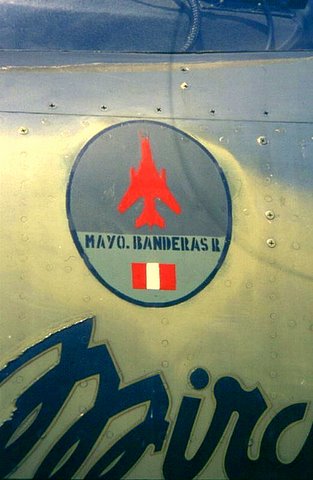
Due to the persistent threat on my Radar Warning Receiver, I ordered my No. 2 to immediately turn around, launch ‘Chaff’ and dive at 0.95 Mach until reaching over the treetops on a northerly heading. Then, Capt. Uscategui informed me that the pilot of the airplane that I had hit, had ejected but not the pilot on the other airplane, who heavily damaged continued flying back South.
Once we lost the threatening Peruvian escort aircraft, we again climbed to 20000 ft in order to return to our base. Once landed, we found out that the Kfir had shot down an A-37B and later through the press, we got confirmation that the two Su-22s never returned to their base.
Following this mission, all aircraft and pilots were put on Alert 2, expecting a retaliation that never took place; instead, after February 10, 1995, the Peruvian Air Force suspended its air operations for bombing and reconnaissance in the Alto Cenepa, and devoted itself solely to search for their shot down crews.
With this hard and certain blow to the enemy aviation, the FAE fulfilled its mission of attaining Local Air Superiority in the Alto Cenepa zone.
History will judge and will recognize the value and importance of maintaining a small air force that, at the same time, is professional and capable of maintaining the sovereignty of our air space.
Although a peace agreement was signed with our neighboring country, we must never forget February 10, 1995, when the FAE fulfilled its duty to the country, because it was ready for it, the same way it is nowadays and it will always be.”
Once the Sukhoi was hit, it lost speed. This situation should have forced you to also slow down in order to keep locking on the targets?
Your assessment is correct. In effect, with the firing and impacting of the first missile, the two airplanes continued flying, of course there was a thick column of black smoke spewing from their exhaust pipes, but they were slowly turning towards us. We had to perform a maneuver known as a “High yo-yo”, and even a “Quarter plane”. My original idea was to get near and fire my cannon, to make sure that the enemy aircraft would not return to their bases, but the threat on my radar warning was constantly indicating that from the I was being locked-on by the FAP Mirage 2000s from the 6 o’clock, and this made me change my plans and I decided to launch the second missile, which at first described a pursuit curve that seemed as if it was not going to hit its mark, but then when it did, caused a large explosion and this time, the Sukhoi literally stopped in mid-air and began to fall in a spin; the second missile that Capt. Uscategui launched did not have the same effect as mine. He would later tell me that he saw how the Sukhoi impacted by his missiles continued flying, but of course we found out later that the Peruvian airplane did not make it to its base either. Capt. Uscategui also saw how the pilot of the airplane that I had hit, ejected.
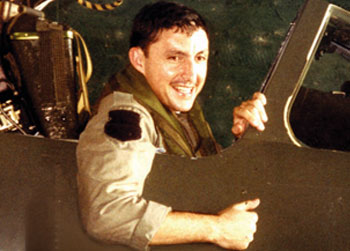
Besides the two Sukhoi shot down, which were detected visually, it is known that you guys were being warned about the presence of “other” aircraft which did not belong to the FAE.
As I told you before, my radar warning was alerting me that a Mirage 2000 had locked me from my 6 o’clock. The same way as it happened during the morning of February 6, I had to eject chaff, and this caused the threat to momentarily lose its lock.
After firing both missiles, we began a dive to the treetop level, and flying over the enormous jungle area, we managed to evade the aircraft that had intercepted us, and then we headed home to report on the success we had achieved.
According to information published, the Sukhoi attack formation would have been composed by four airplanes, which had fighter escort protection.
It is possible that this is true, but we only saw the two Sukhois that we managed to shoot down, and we only felt the threat from the escorting fighters through the radar warning receiver.
After the events of February 10, what was the FAP’s reaction to the circumstances? It is known that they had sent FAP personnel trained to operate portable Strella anti-aircraft missiles. So, was there any presence of enemy aircraft over the area from then on?
They completely stopped their attack missions, that is, they lost the air supremacy.
Was there ever, a FAE’s supersonic aircraft that was under a threat from a missile fired from the ground?
Never in 1995. There was an anti-aircraft missile fired at an F-1 in 1981, but of course, the pilot just saw the smoke trail heading towards him, and the missile never reached him.
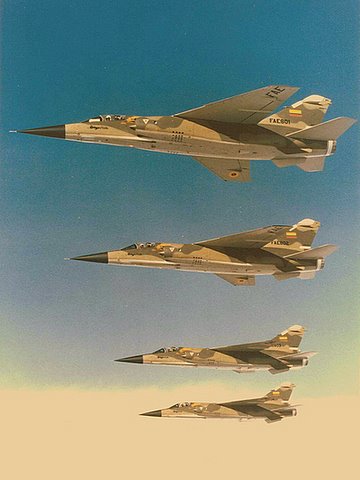
How did your participation in the Cenepa Conflict change your life?
I always say that I fulfilled my duty to my country. I also believe that we were able to demonstrate everything we had learned. We were tested and passed, not something that all combat pilots get to do. Having participated in four real combat missions, personally, has made me appreciate more life, family, friends, everything, absolutely everything. I have received several recognitions but these have not changed me, and they only serve to reinforce my conviction and love for the motherland, and my respect for those who lost their lives during that war.
What are you doing nowadays?
I am now the Air Attache of Ecuador, in France (2006.)
What would be your message for the future generations of FAE Cadets, and for the Ecuadorean youth in general?
To the Cadets, something that I have always told them when I visit my beloved school: “Be authentic, and be convinced as to why you are in the FAE. Be honest with yourselves, and learn to fight to achieve what you want. Nothing good comes easily. There must always be a great effort to achieve the proposed goals, and this is good everywhere, not only in the military formation, but for any career.”
For all the youth: “Nothing is free in life; we must struggle with all of our power to achieve what we want, and more importantly, to do what we like and to do it right; only this way, we will build a better country, and we’ll leave the mark of our passing through this world.”




